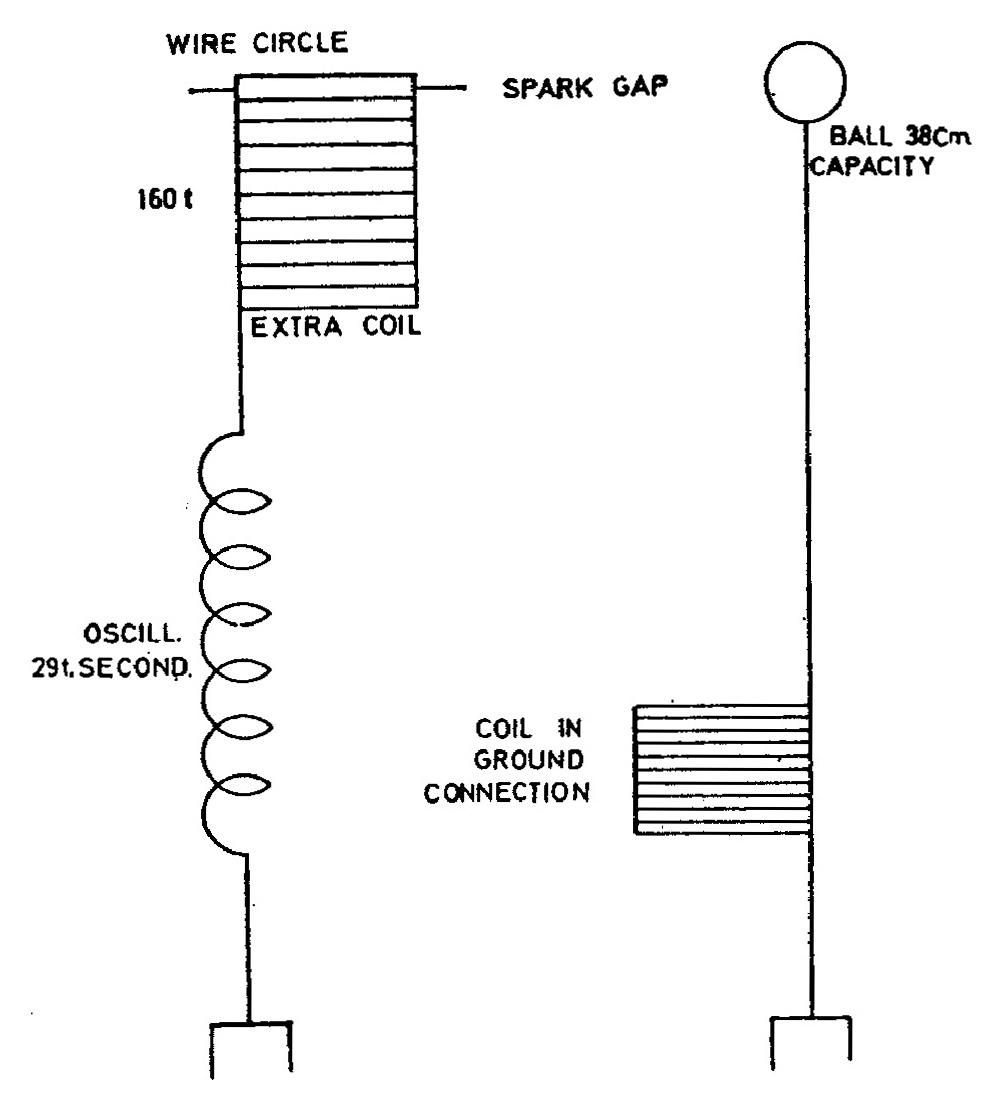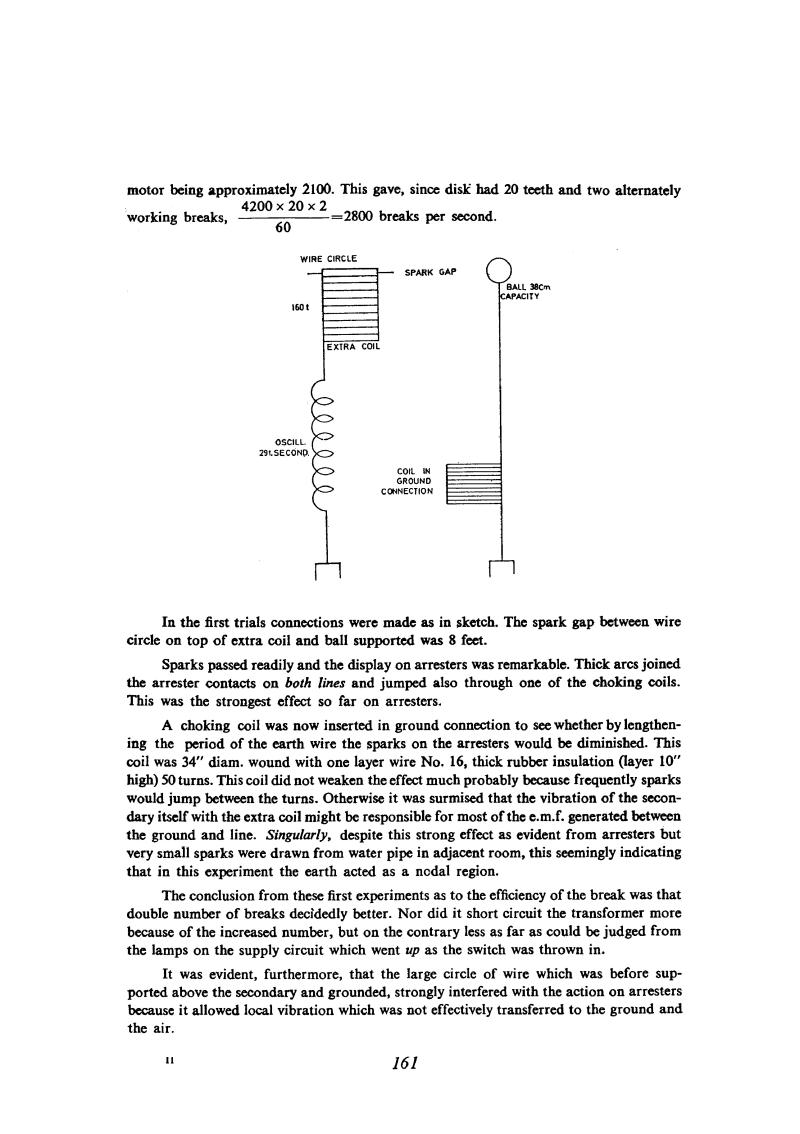
Nikola Tesla Books
motor being approximately 2100. This gave, since disk had 20 teeth and two alternately working breaks, $! {{{4200 \times 20 \times 2} \over 60} = 2800} $! breaks per second.
In the first trials connections were made as in sketch. The spark gap between wire circle on top of extra coil and ball supported was 8 feet.
Sparks passed readily and the display on arresters was remarkable. Thick arcs joined the arrester contacts on both lines and jumped also through one of the choking coils. This was the strongest effect so far on arresters.
A choking coil was now inserted in ground connection to see whether by lengthening the period of the earth wire the sparks on the arresters would be diminished. This coil was 34" diam. wound with one layer wire No. 16, thick rubber insulation (layer 10" high) 50 turns. This coil did not weaken the effect much probably because frequently sparks would jump between the turns. Otherwise it was surmised that the vibration of the secondary itself with the extra coil might be responsible for most of the e.m.f. generated between the ground and line. Singularly, despite this strong effect as evident from arresters but very small sparks were drawn from water pipe in adjacent room, this seemingly indicating that in this experiment the earth acted as a nodal region.
The conclusion from these first experiments as to the efficiency of the break was that double number of breaks decidedly better. Nor did it short circuit the transformer more because of the increased number, but on the contrary less as far as could be judged from the lamps on the supply circuit which went up as the switch was thrown in.
It was evident, furthermore, that the large circle of wire which was before supported above the secondary and grounded, strongly interfered with the action on arresters because it allowed local vibration which was not effectively transferred to the ground and the air.
161
Tesla: âAparatus for utilizing effects transmitted through natural mediaâ, U.S. Patent 685 956, Nov. 5, 1901, Appl. Nov. 2, 1899, P-319.
August 26
Tesla experimented with twice the interruption rate. The oscillator worked better and there was heavy sparking across the lightning arresters (Fig. 4). Investigating the cause of this sparking he inserted a coil in the lead of the metal sphere (Fig. 1) to reject high frequencies. In an earlier experiment (see July 30th) inserting such a choke coil in the ground line had stopped sparking across the arresters. This time it did not, so Tesla tried the circuit in Fig. 2. Still there was no marked change, the sparking across the arresters was only slightly reduced. After this experiment he began to wonder whether the grounding point of the secondary was not perhaps a peak rather than a node of the standing wave. It must be understood that Tesla thought that standing waves were set up around the transmitter (like waves on an open transmission line. With shorter waves the rate of change of amplitude with distance would be faster (i.e. maxima and minima would occur at shorter distance intervals), so he thought that a large potential difference could be obtained with a short distance between the grounding of the secondary and that of the lightning arrester.
In order to explain what happened when the sphere was not grounded (which would mean that there were no short waves) but the sparking across the arrester did not stop, Tesla found it necessary to formulate a new hypothesis: â Could the sparks be produced by static induction upon wire through the air and not chiefly by conduction through earth?â The experiment with which he tried to verify this hypothesis did not yield any definite answer.


